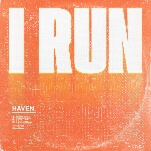Each week, Big Issues focuses on a newly released comic book of significance. This week, it’s What Is Obscenity? The Story Of A Good For Nothing Artist And Her Pussy. Written and drawn by Rokudenashiko, this manga memoir dives deep into the struggle of a Japanese artist that has encountered significant pushback against her vaginal artwork. (Note: This review reveals major plot points.)
Rokudenashiko is on a mission to free the vagina. In her native country of Japan, the vaginal slang word “manko” is considered taboo while the penis equivalent, “chinko,” is used freely. Rokudenashiko (the pseudonym of artist Megumi Igarashi) uses her manko art to destigmatize the vagina, using it as the basis for whimsical figurines, iPhone cases, dioramas, and, in her most infamous piece, a kayak. That last work landed Rokudenashiko in prison in 2014 when the police arrested her for violating obscenity laws after she e-mailed 3-D scanner data of her genitalia to the crowdfunded kayak’s donors. That experience is at the core of her manga memoir What Is Obscenity? The Story Of A Good For Nothing Artist And Her Pussy.
Published by Koyama Press, What Is Obscenity? is a must-read piece of comics activism, telling the disturbing true story of a female artist punished by her country for celebrating a natural part of being a woman. Japan has an annual penis festival and sells portable female genitalia for men to masturbate with, yet Rokudenashiko’s manko art has landed her in prison twice. She’s keenly aware of this hypocrisy and works to expose it in her art, initially with the aforementioned manko pieces, but later with her own personal narrative. She was making a bold feminist statement before she was arrested, but she’s become even more politically charged as a response to the ongoing challenges she’s faced from the Japanese government.
The majority of this book is devoted to “What Is Obscenity? How I Became A So-Called Artist,” which recounts Rokudenashiko’s first arrest and week-long stint in prison. Being arrested and imprisoned gives Rokudenashiko a whole new perspective on her art and life, and even as she’s dealing with the oppressive Japanese prison system, she keeps her spirits up by thinking about all the great material she’s getting for the future manga she’ll make about this story. That manga is exactly as compelling as she predicted, and she crafts a hugely entertaining work blending drama, suspense, humor, pathos, and sociopolitical commentary.
“What Is Obscenity” is a frightening account of a nightmare scenario for an activist artist, but the narrative never gets overbearingly bleak thanks to the visuals. Rokudenashiko understands the power of cute—as she explains in the book’s full-color comic detailing the history of her signature Ms. Manko character—and her light, adorable art style provides an engaging entryway into very serious subject matter. The absurdity of her situation is heightened when it’s interpreted through this aesthetic, and it’s a vital part of the book’s humor, much of which stems from the artist’s disbelief at the police’s ignorance. They don’t have a full understanding of what she does or the circumstances of why she sent out the 3-D scanner data, and she has to consistently inform people of what crowdfunding is and what it entails. (A report filed by the prosecutor has “Crowdfunding” as the name of Rokudenashiko’s website, which is both hilarious and depressing.)
The breaks between each chapter of “What Is Obscenity?” are filled with additional background material assembled by editors Anne Ishii (who also translates) and Graham Kolbeins, providing valuable context about Japanese culture, its legal system, and its prison system. These breaks also examine smaller elements of Rokudenashiko’s story, like the Mammy calcium drink provided to her in prison and the popular song, “Say Yes,” played on the intercom during her fourth day in custody. These pieces aren’t long, but they add considerable depth to the reading experience by fleshing out the world of the story, and Ishii and Kolbeins go out of their way to make this book a comprehensive exploration of Rokudenashiko’s struggle without bogging it down with too much text.
After the conclusion of the main “What Is Obscenity?” manga, there’s a breakdown of Igarashi’s second arrest and imprisonment, a transcript of her statement to the judge during that imprisonment, and an interview between Rokudenashiko and filmmaker Sion Sono, These pieces all have some sort of visual element attached, whether it’s illustration or photography, and the production design by Massive brings everything together in a clean, attractive package. The book would be worth it for the three different manga stories, but the extra content makes it an even more powerful piece of comics activism.
Rokudenashiko means “good for nothing girl,” and it’s important that people use this pseudonym when discussing her art. That name is an essential part of Igarashi’s artistic identity, and when that identity has been called into question as heavily as hers has, the name has even more weight. The police used Igarashi’s real name when they referred to her as a “so-called artist,” and that language was echoed by the Japanese press to diminish Rokudenashiko’s work in the public eye.
This Monday, the verdict came down in Igarashi’s case, and while she was acquitted on a charge of “displaying obscene materials publicly,” she was fined ¥400,000 (approximately $3,667) for the distribution of the 3-D printer data. The ruling stated that the artistic merit of the kayak wasn’t high enough to compensate for the sexually titillating content of her scanned vagina. But What Is Obscenity? spotlights just how wrong that statement is by showing the importance of Rokudenashiko’s art in the Japanese cultural landscape.
The sheer fact that her art is considered titillating speaks volumes about the country’s views of sexuality, and she’s actively trying to remove the titillation by using her manko to create pieces that don’t have any sexual undertones. There’s a fetish for everything, so there’s probably someone out there turned on by Rokudenashiko’s manko kayak. But equating the simple visual of a sexual organ with titillation and obscenity is unreasonable, especially when the penis doesn’t face that kind of scrutiny. A vagina kayak may sound like a joke, but it’s a serious statement with major artistic merit, and sending out that 3-D scan to donors is a key part of that statement. Rokudenashiko’s mission is all about liberating the manko by sharing it with the world, and her dedication to this goal in the face of overwhelming adversity is truly inspiring.








































